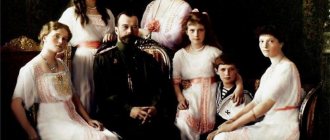Since 46 BC, most countries in the world have used the Julian calendar. However, in 1582, by the decision of Pope Gregory XIII, it was replaced by Gregorian. That year, the next day after the fourth of October was not the fifth, but the fifteenth of October. Now the Gregorian calendar is officially adopted in all countries except Thailand and Ethiopia.
Reasons for adopting the Gregorian calendar
The main reason for the introduction of a new chronology system was the movement of the vernal equinox, depending on which the date of the celebration of Christian Easter was determined. Due to discrepancies between the Julian and tropical calendars (the tropical year is the period of time during which the sun completes one cycle of changing seasons), the day of the vernal equinox gradually shifted to earlier dates. At the time of the introduction of the Julian calendar, it fell on March 21, both according to the accepted calendar system and in fact. But by the 16th century, the difference between the tropical and Julian calendars was already about ten days. As a result, the vernal equinox no longer fell on March 21, but on March 11.
What type is it?
The first calendars began to appear in Egypt five thousand years BC. The ancients were guided by the stars, so the year began with the appearance of the star Sirius. This order was necessary for the tribe to understand the beginning of the rainy season and competent management of the economy. The Germans based their first chronology systems on the winter solstice.
The main components of the calendar were the day, months and year; they formed three types of calculation based on the phases of the Moon, the movement of the Earth around the Sun and the familiar ones - solar, based only on the rotation of our planet around the largest star of our Galaxy.
The solar calendar sets the length of the tropical year at 365, 242 days. A normal year lasts 365 days, and a leap year, which allows the calendar to comply with the tropical laws of nature, is one day longer.
These were the Julian and New Gregorian calendars.
The history of the creation of the Gregorian calendar
Scientists paid attention to the above problem long before the adoption of the Gregorian chronology system. Back in the 14th century, Nikephoros Grigora, a scientist from Byzantium, reported this to Emperor Andronicus II. According to Grigora, it was necessary to revise the calendar system that existed at that time, since otherwise the date of Easter would continue to shift to a later and later time. However, the emperor did not take any action to eliminate this problem, fearing protest from the church.
Subsequently, other scientists from Byzantium also spoke about the need to switch to a new calendar system. But the calendar continued to remain unchanged. And not only because of the rulers’ fear of causing indignation among the clergy, but also because the further the Christian Easter moved away, the less chance it had of coinciding with the Jewish Passover. This was unacceptable according to church canons.
By the 16th century, the problem had become so urgent that the need to solve it was no longer in doubt. As a result, Pope Gregory XIII assembled a commission, which was tasked with carrying out all the necessary research and creating a new calendar system. The results obtained were displayed in the bullet “Among the most important”. It was she who became the document with which the adoption of the new calendar system began.
Interesting Facts
It is curious that modern researchers and astronomers are working on developing and creating a new, more accurate and convenient calendar to replace the Gregorian calendar. Similar projects were considered at the UN, but adoption was postponed.
Disputes continue about which of them is correct and most popular - Gregorian and Julian. Most countries use the first one, and resort to the Caesar calendar only to calculate Orthodox holidays.
It is curious that the Soviet government, through His Holiness Patriarch Tikhon, sought to introduce a new style into church life. It was never possible to do this. Christians, relying on Scripture and the words of the apostles, live according to Julianism. In contrast, the founders of the new style are Catholics, who live in secular and Orthodox life according to the Gregorian “rules.” (see May 1: Spring and Labor Day)
Another ancient and interesting fact is the position of Father Gregory XIII. He was convinced that the calendar issue was not a religious, but an astronomical problem, and the church had no right to dictate its laws.
Julian and Gregorian calendars - differences
The main disadvantage of the Julian calendar is its lack of accuracy in relation to the tropical calendar. In the Julian calendar, all years that are divisible by 100 without a remainder are considered leap years. As a result, the difference with the tropical calendar increases every year. Approximately every century and a half it increases by 1 day.
The Gregorian calendar is much more accurate. It has fewer leap years. In this chronology system, leap years are considered to be years that:
- divisible by 400 without remainder;
- divisible by 4 without a remainder, but not divisible by 100 without a remainder.
Thus, 1100 or 1700 years in the Julian calendar are considered leap years, since they are divisible by 4 without a remainder. In the Gregorian calendar, from those that have already passed since its adoption, 1600 and 2000 are considered leap years.
Immediately after the introduction of the new system, it was possible to eliminate the difference between the tropical and calendar years, which at that time was already 10 days. Otherwise, due to errors in calculations, an extra year would accumulate every 128 years. In the Gregorian calendar, an extra day occurs only every 10,000 years.
Calendar is a tricky question
Traditionally for Rus', the issue of the calendar was difficult and confusing. Since the time of the baptism of Rus' by Vladimir the Great, only the official chronology has changed approximately five times. With all this calendar confusion, which greatly complicates the work of historians, in parallel there was also a traditional Slavic calendar! But where did such confusion come from?
How the Gregorian calendar was adopted in different countries
Not all modern states adopted the new chronology system immediately. The Catholic states were the first to switch to it. In these countries, the Gregorian calendar was officially adopted either in 1582 or shortly after the decree of Pope Gregory XIII.
In a number of states, the transition to a new calendar system was associated with popular unrest. The most serious of them took place in Riga. They lasted for five whole years - from 1584 to 1589.
There were also some funny situations. So, for example, in Holland and Belgium, due to the official adoption of the new calendar, after December 21, 1582, January 1, 1583 came. As a result, the inhabitants of these countries were left without Christmas in 1582.
Russia was one of the last to adopt the Gregorian calendar. The new system was officially introduced on the territory of the RSFSR on January 26, 1918 by decree of the Council of People's Commissars. In accordance with this document, immediately after January 31 of that year, February 14 came on the territory of the state.
Later than in Russia, the Gregorian calendar was introduced only in a few countries, including Greece, Turkey and China.
[edit] Months
According to the Gregorian calendar, the year is divided into 12 months, lasting from 28 to 31 days:
| № | Month | Number of days |
| 1 | January | 31 |
| 2 | February | 28 (in leap years - 29) |
| 3 | March | 31 |
| 4 | April | 30 |
| 5 | May | 31 |
| 6 | June | 30 |
| 7 | July | 31 |
| 8 | August | 31 |
| 9 | September | 30 |
| 10 | October | 31 |
| 11 | November | 30 |
| 12 | December | 31 |
[edit] Rule for remembering the number of days in a month
There is a simple rule for remembering the number of days in a month - the “rule of dominoes”
.
If you put your fists together in front of you so that you can see the backs of your palms, then by the “knuckles” (finger joints) on the edge of the palm and the spaces between them you can determine whether a month is “long” (31 days) or “short” (30 days, except February). To do this, you need to start counting the months from January, counting the dominoes and intervals. January will correspond to the first domino (long month - 31 days), February - the interval between the first and second dominoes (short month), March - domino, etc. The next two consecutive long months - July and August - fall exactly on the adjacent knuckles of different hands (the space between the fists does not count).
The Gregorian calendar and the Orthodox Church
After the official adoption of the new chronology system, Pope Gregory XIII sent a proposal to Constantinople to switch to a new calendar. However, she was met with refusal. Its main reason was the inconsistency of the calendar with the canons of celebrating Easter. However, later most Orthodox churches switched to the Gregorian calendar.
Today, only four Orthodox churches use the Julian calendar: Russian, Serbian, Georgian and Jerusalem.
[edit] Sources
- Federal Law of the Russian Federation of June 3, 2011 N 107-FZ “On the calculation of time”, Art. 2, paragraph 2
- S. Cassidy. Error in statement of tropical year.(English)
- Yu. Krasilnikov. Sun, Moon, ancient holidays and newfangled theories.
- M. L. Gorodetsky, On the issue of the accuracy of the Gregorian calendar and the lunar cycle // Historical and astronomical studies, Vol. XXXV. -M.: Fizmatlit, 2010, pp. 289-293.
- Klimishin I. A.
Calendar and chronology. — Ed. 3. - M.: Nauka, 1990. - P. 308-309. — 478 p. — 105,000 copies. — ISBN 5-02-014354-5.. - Kulikov S.
Thread of times. Small encyclopedia of the calendar with notes in the margins of newspapers. - M.: Nauka, 1991. - P. 144-146. — 288 p. — 200,000 copies. — ISBN 5-02-014563-7. - Inter Gravissimas (lat.) (fr.) (eng.)
- Yu. V. Nesterenko (English), Diophantine approximations, church calendars and Easter // Historical and astronomical studies, Vol. XXXV. -M.: Fizmatlit, 2010, pp. 215-288.
- ↑ 9,009,019,029,039,049,059,069,079,089,099,109,119,129,13 Chris Turney
Changeable calendar // Bones, rocks and stars. The science of when things happened = Bones, Rocks and Stars: The Science of When Things Happened. — Alpina non-fiction. — 240 p. — 3000 copies. — ISBN ISBN 978-5-91671-087-8, ISBN 978-0-230-55194-7. - Law on the introduction of a new style in Transcaucasia
- World History Vol. 11, pp. 100-101. Minsk: Literature, 1997.
- Gregorianska kalendern. (Swedish)
- Peter H. Lee, ed., Sourcebook of Korean Civilization: Vol.
2: From the seventeenth century to the Modern Period , page 341. - Peter H. Lee, ed., Sourcebook of Korean Civilization: Vol.
2: From the seventeenth century to the Modern Period , page 382 and page 520, note 13.
Rules for specifying dates
In accordance with the generally accepted rule, dates falling between 1582 and the moment the Gregorian calendar was adopted in the country are indicated in both the old and new styles. In this case, the new style is indicated in quotation marks. Earlier dates are indicated according to the proleptic calendar (i.e., a calendar used to indicate dates earlier than the date the calendar appeared). In countries where the Julian calendar was adopted, dates before 46 BC. e. are indicated according to the proleptic Julian calendar, and where there was none - according to the proleptic Gregorian calendar.
Fyodor Viktorovich Vinberg, officer, Black Hundred member, writer and publisher (in exile) died
Discussion: 15 comments
- Irina:
12/14/2010 at 00:00To switch from a new style to an old one, you need to subtract 13 days from the date according to the new style. According to the Gregorian calendar (new style), the New Year begins on January 1. And according to what style is the Old New Year celebrated on January 14? After all, according to the old style (Julian calendar), it should be celebrated 13 days earlier, not later, i.e. December 19, not January 14.
- * * *:
12/14/2010 at 00:00
Irina, we must not subtract, but add 13 days to the old style: 1+ 13 = 14.
- Chur:
05/27/2012 at 00:00
Simple question: What calendar was there in Rus' in the Summer from SMZH 6496 (988) and before that. If possible, then indicating the sources of information.
- Adm. — Churu:
05/27/2012 at 00:00
See the article about the calendar: https://rusidea.org/25011403
- Georgy:
11/24/2015 at 00:00
Where are the sources? It is unclear what the author relies on when concluding that popular protests prompted Patriarch Tikhon to abandon the innovation imposed by the renovationists and Bolsheviks. Where it is convenient to have intelligible argumentation. And what kind of source is this Masonic encyclopedia?!
- Warrior:
03/30/2016 at 00:00
Thanks for the great article.
- Georges:
01/13/2017 at 00:00
Irina, repeat the arithmetic for 2nd grade
- AVTANDIL:
01/16/2017 at 00:00
Anyone who demands to indicate the source is very disingenuous; Lenin and K* were also disingenuous when they introduced the Western style of life as the basis for the transformation of the Russian people into a cultural nation as part of the West. Elementary - the calendar they canceled was distinguished by the mathematical accuracy of the world cosmos it reflected (including the Earth as an element of the Cosmos). In this regard, Russia is experiencing inaccuracies in development, both materially and spiritually. It was only possible to kill the Romanov family so cruelly and horribly in a non-Russian, Western style. Changing the calendar is the murder of everything Russian - both living and dead. Correct the countdown of universal events (return everything to normal) and RUSSIA’S THINGS WILL GET GOOD!!!!!!
- Anna:
01/30/2017 at 00:00
Tell me, how is it that Lenin moved the calendar forward by two weeks, and we “celebrate” the New Year according to the “old style” also two weeks after the New Year according to the new style????? Isn’t it more logical that New Year’s Eve according to the old style was November 18 + 14 days = January 1??? Or as they say, “the skis don’t work.” Can anyone clarify??
- Adm. — Anna:
01/30/2017 at 00:00
We celebrate New Year according to the old style on January 1st. = 14 Jan n.st. What's unclear here? The difference is 13 days. Where did you get November 18 + 14 days = January 1??
- Victor:
02/17/2017 at 00:00
In the USSR(?) a new calendar style(?) was introduced in 1918. With all the will, the USSR was created only in 1922, on December 30!!!
- MVN - to Viktor:
02/18/2017 at 00:00
You're right. Corrected to "Bolsheviks". Fortunately, their attempt to replace the Cyrillic alphabet with the Latin alphabet failed. But you don't seem happy about this?
- Oleg:
12/24/2017 at 07:58
Russia switched to the Gregorian calendar under the Bolsheviks. At that time, the church was under persecution, and it was to Lenin’s advantage (and not a bad one, after all) that the people, having spent the New Year partying and getting drunk, would no longer be able to walk any further. For the New Year, this miracle was invented - Santa Claus, who began to perform miracles. Everything is very simple. Over 150 years, the Julian calendar lags behind world time by 1 day, so in 50 years, according to the Julian calendar, Christmas will be on January 8.
- MVN:
12/24/2017 at 08:44
Oleg, Christmas is always celebrated according to the Julian calendar on December 25th. And according to the Gregorian calendar too, with the corresponding calendar difference. See about this% https://rusidea.org/25011403
- Victor:
10/01/2018 at 22:50
14th comment: not January 25, but December 25, could you suggest literature on the calendar topic (comparison of the JULIAN and GREGORIAN calendars)?
[Thank you. The typo has been corrected. Comparison of calendars, see: https://rusidea.org/25011403 ]










